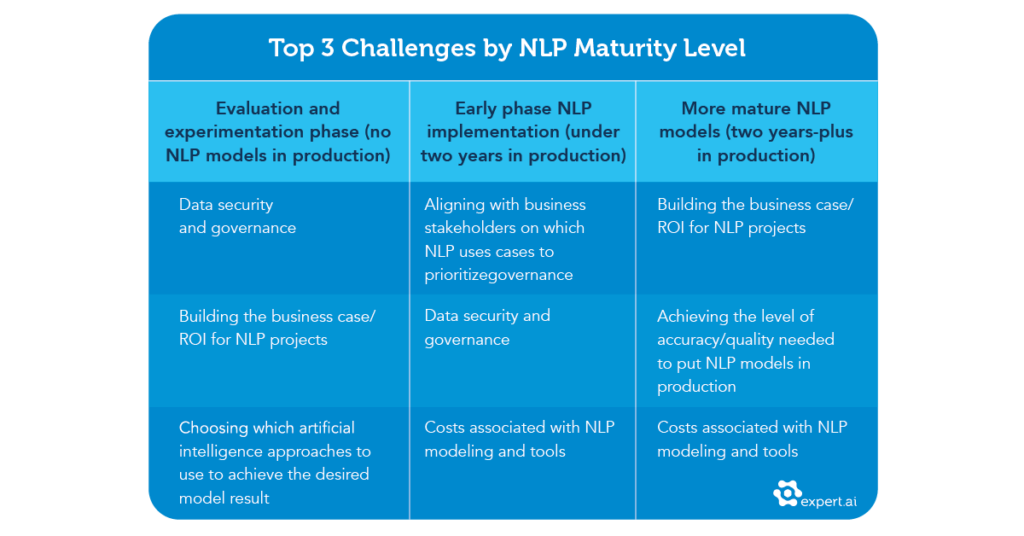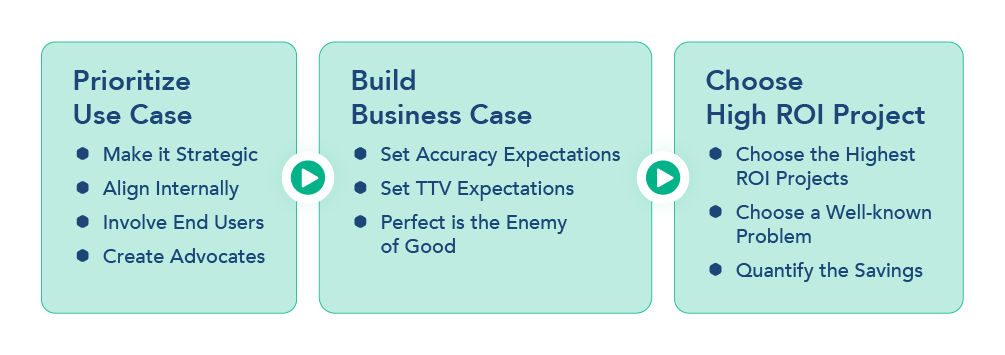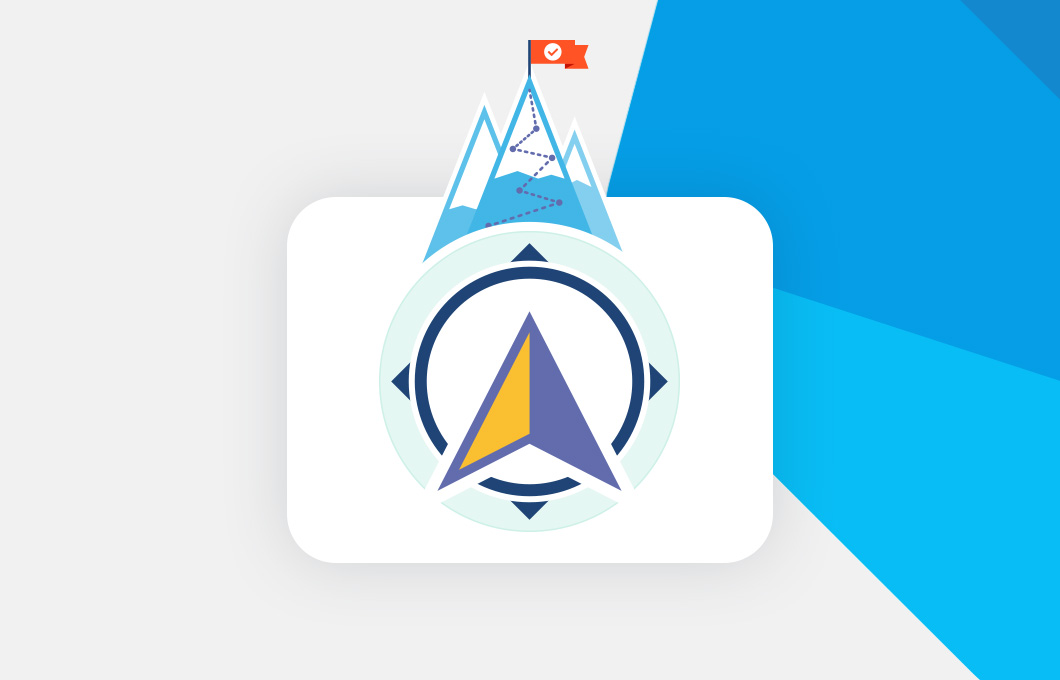
One dimension that I believe is underrated is the way that organizations understand AI and Natural Language Processing (NLP) initiatives in general. It’s what I call AI readiness or AI maturity.
Incorporating AI in your business is a big step, one that has much larger implications than your average technology implementation. For most businesses, AI ushers in transformations that impact your technical infrastructure, your data and processes, the skills of your teams, and the culture at large (to name a few). An organization that is in the consideration or pilot stage is very different from one that has completed two or three implementations. It’s also different from a company that has AI embedded in many processes.
That’s why it’s so important for organizations that embark on the AI / NLP journey to be aware of where they stand in terms of readiness, at every phase. They need to understand what AI can and cannot do, to make sure they bring to the table all the stakeholders who will be involved in or who are affected by the journey. And most importantly, everyone is aligned on WHY you need NLP, the root problem that will be solved, the desired outcomes, how they will be measured, and what happens if you don’t solve the problem NOW.
What is AI Maturity?
So, what constitutes maturity in the use of AI technologies? When we think of AI maturity, it’s about the degree to which an organization is utilizing AI in their business. Gartner’s AI Maturity Model outlines five levels. From the planning stage (level 1)—where organizations are selecting use cases but have no pilots in place—to transformational (level 5)—where AI is embedded in how an organization does business.
Many factors impact an organization’s path to maturity. Understandably, technical capabilities and budget can hamstring an organization’s ability to go from an initial pilot or deployment and beyond. From there, teams are faced with even more challenges (as we’ll get into below) that can hinder progress. In its worldwide AI software revenue forecast for 2022, Gartner cited “reluctance to embrace AI, lack of trust in AI and difficulties delivering business value from AI” as factors that hold organizations back from reaching the point where they have an active AI strategy and a solid infrastructure.
Exploring Different AI Maturity Levels
In our survey of NLP practitioners, we identified three levels of maturity:
- Evaluation and experimentation phase: Organizations who are just beginning their AI journey with pilots and tests but have no NLP models currently in production.
- Early phase: Organizations who have one or more NLP models in production for two years or less.
- Mature phase: Organizations who have one or more NLP models in production for more than two years.
We asked respondents to identify the top three challenges based on their level of maturity. Here, we’ll look at how to address three of the top challenges.

Recommendations for Moving Up the AI Maturity Curve
1. Choose the Right Use Case to Prioritize
Early-phase companies face multiple challenges. They are usually linked to the visibility that an NLP project has at an organizational level.
The ideal scenario is when the NLP initiative has been presented across the organization as a strategic one, and its economic implications. If all critical departments are aware of the WHY of the NLP project, this can help facilitate cross-collaboration and teamwork.
A second challenge is around the internal alignment of the expected benefits of the project. Most NLP projects start with teams who are aware of how the NLP project is being built, how it’s tested, and the benefits the project ultimately offers the organization. However, it’s often the case that other teams who could be impacted are not involved: this could be a huge risk for adoption.
In this case, we recommend involving the end users involved in the implementation from the very beginning. If the end users understand what’s in it for them, this will build alignment with the high-level goals and objectives of the project.
2. Build the Business Case
More deployment experience brings advantages as well as challenges. Organizations with more mature deployments will have the hands-on experience that will help them avoid typical mistakes and pitfalls that could hinder progress.
However, being able to justify the costs associated with building or scaling NLP modeling and tools is one area where these organizations struggle. Here, we recommend leveraging past success with other NLP initiatives to demonstrate positive ROI. It will always be easier to advocate for more funding when you can show that projects pay off.
Another challenge is around attaining a certain level of accuracy for the projects. Mature organizations that have experimented with the technology have high expectations for the accuracy and reliability of outcomes. In reality, time to value can actually be longer than for less mature organizations because there is a continuous need to fine-tune and perfect the results to get closer to an ideal state. In this case, we’d recommend sticking to the 80/20 rule rather than delaying the go-live time, adjusting expectations, pushing the NLP model in production, collecting feedback from the end users, and improving the solution by small increments. Don’t let “perfect” be the enemy of “good.”
3. Choose projects with a high ROI
You can’t fail if you choose projects with high ROI. One of the biggest mistakes we’ve seen is when organizations choose to solve a problem that no one cares about. Instead, we recommend focusing on problems that an NLP initiative can solve quickly, and, most importantly, on problems that have an immediate meaningful economic impact on the organization.
A project that solves a well-known problem and gets results can also inspire excitement from the rest of the organization and direct even more widespread support.
Finally, we can’t talk about NLP project success without mentioning data and security. Read our next post, Prepare for NLP Project Success: Data and Governance to prepare for the data security and governance aspects of your next NLP project, and get the full guide: The Roadmap to NLP Success.



